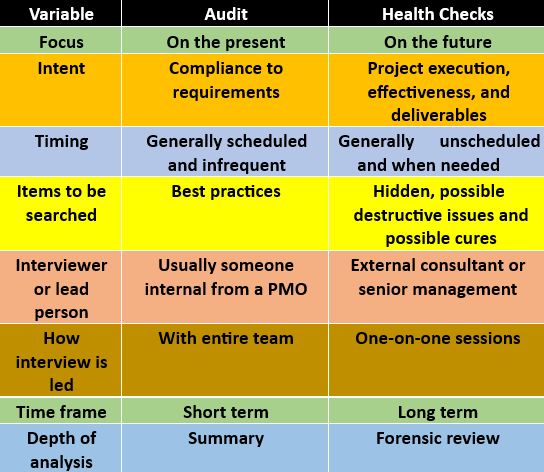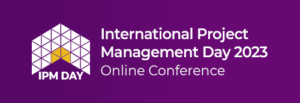By Harold Kerzner, Ph.D.
November 29, 2023
Introduction to Project Health Checks
Projects seem to progress quickly until they are about 60-70% complete. During that time, everyone applauds that work is progressing as planned. Then, perhaps without any warning, the truth comes out and we discover that the project is in trouble. This occurs because of:
- Our disbelief in the value of using the traditional project metrics of time, cost, and scope only
- Selecting other metrics which may not be applicable or correct
- Our fear of what project health checks may reveal
Some project managers have an incredible fixation with project metrics and numbers, believing that metrics are the Holy Grail in determining status. Most projects seem to focus heavily on just two metrics: time and cost. These are the primary metrics in all earned value measurement systems (EVMS). While these two metrics “may” give you a reasonable representation where you are today, using these two metrics to provide forecasts into the future are “grey” areas and may not indicate future problem areas that could prevent a successful and timely completion of the project. At the other end of the spectrum, we have managers that have no faith in the metrics and therefore focus on vision, strategy, leadership, and prayers.
Rather than relying on metrics alone, the simplest solution might be to perform periodic health checks on the project. In doing this, three critical questions must be addressed:
- Who will perform the health check?
- Will the interviewees be honest in their responses?
- Will management and stakeholders overreact to the truth?
The surfacing of previously unknown or hidden issues could lead to loss of employment, demotions, or project cancellation. Yet project health checks offer the greatest opportunity for early corrective action to save a potentially failing project. Health checks can also discover future opportunities.
Understanding Project Health Checks
People tend to use audits and health checks synonymously. Both are designed to ensure successful repeatable project outcomes, and both must be performed on projects that appear to be heading for a successful outcome as well as those that seem destined to fail. There are lessons learned and best practices that can be discovered from both successes and failures. Also, detailed analysis of a project that appears to be successful now might bring to the surface issues that show that the project is really in trouble.

Table 1 shows some of the differences between audits and health checks. Although some of the differences may be subtle, we will focus our attention on health checks.
During a team meeting, the project manager asked the team, “How’s the work progressing?” The response was:
“We’re doing reasonably well. We’re just a little bit over budget and a little behind schedule, but we think we’ve solved both issues by using lower salaried resources for the next month and having them work overtime. According to our enterprise project management methodology, our unfavorable cost and schedule variances are still within the threshold limits and the generation of an exception report for management is not necessary. The customer should be happy with our results thus far.”
These comments are representative of a project team that has failed to acknowledge the true status of the project because they may be too involved in the daily activities of the project or do not believe there are issues. Likewise, we have project managers, sponsors and executives that are caught up in their own daily activities and readily accept these comments with blind faith, thus failing to see the big picture. If an audit had been conducted, the conclusion might have been the same, namely that the project is successfully following the enterprise project management methodology and that the time and cost metrics are within acceptable limits. A forensic project health check, on the other hand, may disclose the seriousness of the issues.
Table 1. Audits vs. Health Checks

Just because a project is on time and/or within the allotted budget does not guarantee success. The end result could be that the deliverables may be of poor quality such that they are unacceptable to the customer. In addition to time and cost, project health checks focus on quality, resources, benefits, risks, safety issues, legal considerations, and requirements just to name a few. The true measure of the project’s future success is the value that the customers see at the completion of the project. Health checks must therefore be value focused. Audits, on the other hand, usually do not focus on value.
Health checks can function as an ongoing tool by being performed randomly when needed or periodically throughout various life cycle stages. However, there are specific circumstances that indicate that a health check should be accomplished quickly. These include:
- Significant scope creep
- Escalating costs accompanied by a deterioration in value and benefits
- Schedule slippages that cannot be corrected
- Missed deadlines
- Poor morale accompanied by changes in key project personnel
Periodic health checks, if done correctly, eliminate ambiguity such that true status can be determined. The benefits of health checks include:
- Determining the status of the project
- Identifying problems early enough such that sufficient time exists for corrective action to be taken
- Identifying the critical success factors that will support a successful outcome or the critical issues that can prevent successful delivery
- Identifying lessons learned, best practices and critical success factors that can be used on future projects
- Evaluating compliance to and improvements for the enterprise project management methodology
- Identifying which activities may require or benefit from additional resources
- Identifying present and future risks as well as possible risk mitigation strategies
- Determining if the benefits and value will be there at completion
- Determining if euthanasia is required to put the project out of its misery
- The development of or recommendations for a fix-it plan
There are misconceptions about project health checks. Some of these are:
- The person doing the health check does not understand the project or the corporate culture, thus wasting time.
- The health check is too costly for the value we will get by performing it.
- The health check ties up critical resources in interviews.
- By the time we get the results from the health check, it is either too late to make changes or the scope of the project may have changed.
Who Performs the Health Checks?
One of the challenges facing companies is whether the health check should be conducted by internal personnel or by external consultants. The risk with using internal personnel is that they may have loyalties or relationships with people on the project team and therefore may not be totally honest in determining the true status of the project or in deciding who was at fault.
Using external consultants or facilitators is often the better choice. External facilitators can bring to the table:

- A multitude of forms, guidelines, templates, and checklists used in other companies and similar projects
- A promise of impartiality and confidentiality
- A focus on only the facts and hopefully free of politics
- An environment where people can speak freely and vent their feelings
- An environment that is relatively free from other day-to-day issues
Life Cycle Phases
There are three life cycle phases for project health checks. These include:
- Review of the business case and the project’s history
- Research and discovery of the facts
- Preparation of the health check report
Reviewing the business case and project’s history may require the health check leader to have access to proprietary knowledge and financial information. The leader may have to sign non-disclosure agreements and non-compete clauses before being allowed to perform the health check.

In the research and discovery phase, the leader prepares a list of questions that need to be answered. The list can be prepared from the PMBOK® Guide’s domain areas or areas of knowledge. The questions can also come from the knowledge repository in the consultant’s company and may appear in the form of templates, guidelines, checklists, or forms. The questions can change from project to project and industry to industry.
Some of the critical areas that must be investigated include:
- Performance against baselines
- Ability to meet forecasts
- Benefits and value analyses
- Governance
- Stakeholder involvement
- Risk mitigation
- Contingency planning
If the health check requires one-on-one interviews, the health check leader must be able to extract the truth from interviewees that may have different interpretations or conclusions about the status of the project. Some people will be truthful whereas others will either say what they believe the interviewer wants to hear or distort the truth as a means of self-protection.
The final phase is the preparation of the report. This should include:
- A listing of the issues
- Root cause analyses, possibly including identification of individuals that created the problems
- Gap analysis
- Opportunities for corrective action
- A get-well or fix-it plan
Conclusions
Project health checks are not “Big Brother is Watching You” activities. Rather, it is part of project oversight. Without these health checks, the chances of project failure are significantly increased. Project health checks also provide us with insight on how to keep risks under control. Performing health checks and taking corrective action early is certainly better than having to manage distressed projects.

Dr. Harold D. Kerzner, Ph.D., is Senior Executive Director at the International Institute for Learning, Inc., a global learning solutions company that conducts training for leading corporations throughout the world.
He is a globally recognized expert on project, program, and portfolio management, total quality management, and strategic planning. Dr. Kerzner is the author of bestselling books and texts, including the acclaimed Project Management: A Systems Approach to Planning, Scheduling, and Controlling, Thirteenth Edition. His latest book, Project Management Next Generation: The Pillars for Organizational Excellence, co-authored with Dr. Al Zeitoun and Dr. Ricardo Viana Vargas, delivers an expert discussion on project management implementation of all kinds.




